ASUS Rampage V Extreme Motherboard Review – Intel X99
ASUS Rampage V Extreme Motherboard Layout
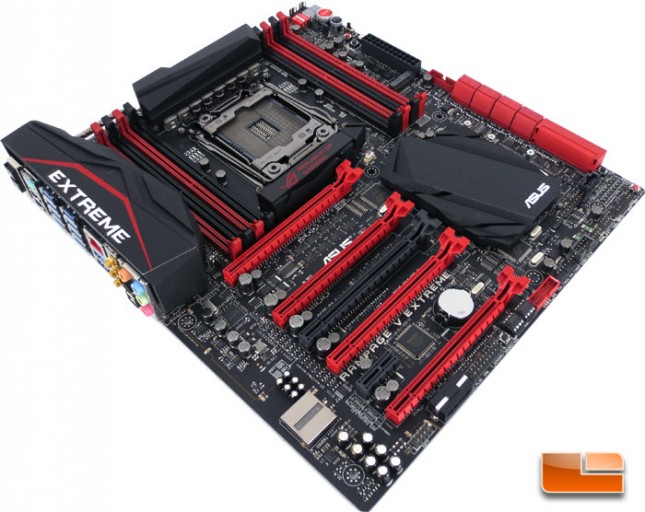
The ASUS Rampage V Extreme continues on with the traditional red and black color scheme of the Republic of Gamers product stack. The ASUS Rampage V Extreme is certainly a really slick looking board, but that alone won’t sell it. If it doesn’t have the performance and features needed, it’ll be a waste. We’ve already looked at some of the features, so those are there. The performance we will get to shortly, but since it is an ASUS ROG board, I’d be willing to bet that the ASUS RVE will have it to spare! The ASUS Rampage V Extreme will need a big home for it, it’s an Extended ATX motherboard measuring 12″ x 10.7″.
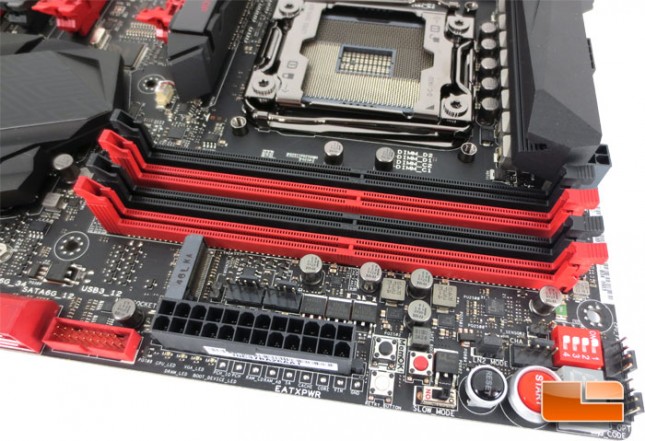
The ASUS Rampage V Extreme Intel X99 motherboard is capable of running up to 64GB of DDR4 memory across the quad channel architecture. The memory speed shouldn’t be an issue, the ASUS RVE is capable of running the DRAM at up to 3300MHz (O.C.). If you hadn’t guessed, the ASUS RVE will support the Intel XMP profiles as well. Along the front edge of the ASUS RVE there’s a lot happening, in the corner of the board there is three sets of 4pin fan headers, Q-Code LED, Dip switches to enable or disable PCIe slots, Power & Reset buttons, Slow Mode, Retry button, Safe Boot, MemOK!, LN2 Mode, and a Thermal Sensor header (T_Sensor2). To the left of that is the traditional 24pin ATX power, and a handful of voltage measuring points just in front of there. Above the ATX power is another pair of 4pin fan headers (5 so far if you’re counting), and another Thermal Sensor (T_Sensor3). Moving to the left, there is the first of the two internal Intel X99 SuperSpeed USB 3.0 headers. Just above there is the M.2 Socket 3.
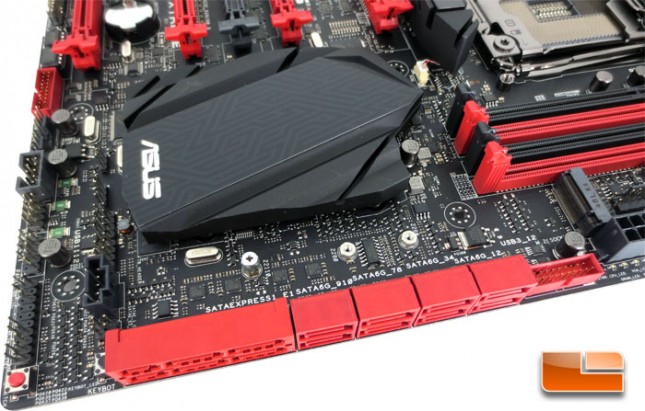
Rotating our view of the ASUS Rampage V Extreme around we can pick up where we left off. Next to the internal SuperSpeed USB 3.0 header is the SATA III 6Gbps ports. Along the edge of the board there is the BIOS switch, front panel header, ROG connector, USB 2.0 header, another pair of 4pin headers, and the second of two Internal SuperSpeed USB 3.0 headers.

The ASUS Rampage V Extreme has a total of eight SATA III ports which are all controlled by the Intel X99 chipset. In addition to the eight SATA ports, there is a pair of SATA Express ports, one of which is native to the Intel X99 chipset. The other SATA Express port is controlled by the ASMedia SATA III controller. If you don’t plan on running SATA Express, you are able to utilize the SATA III ports from the SATA Express as normal SATA III Ports.
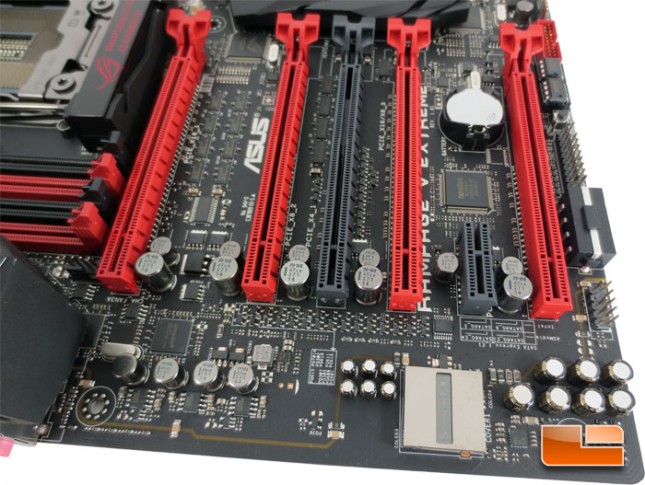
The ASUS Rampage V Extreme has five PCIe X16 slots and is capable of running 4-Way SLI and 4-Way CrossFireX. If there is an Intel Core i7-5960X installed into the ASUS Rampage V Extreme the four red PCIe X16 slots will run at x16, x16/x16, x16/x8/x8 or x16/x8/x8/x8 mode with 40-LANE CPU or x16, x16/x8, x8/x8/x8 mode with 28-LANE CPU. The black PCIe X16 slot in the middle of the expansion slots, while mechanically a X16 slot, electrically it’s only a x4 slot. Along the right edge of the PCB, you can make out a pair of BIOS chips, Sound Stage button, Thermal Sensor (T_Sensor1), T.P.M. header, 4-pin Molex power plug, and the front panel audio header.
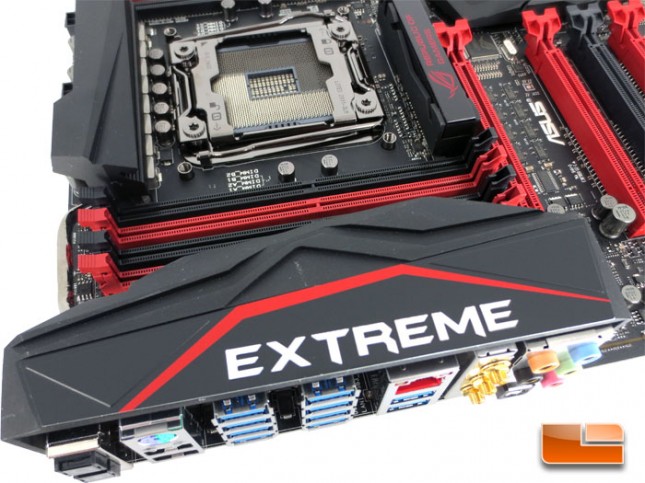
Looking down at the back of the ASUS Rampage V Extreme, most of our view is obscured by the cover over the I/O panel. What we can see though is the other four DIMM slots. I failed to mention that these DIMM slots are the ASUS Q-DIMM slots, I’ve been a fan of the ASUS Q-DIMM slots for quite some time now. There is a latch on only one side that needs to be released to pop the memory modules out.
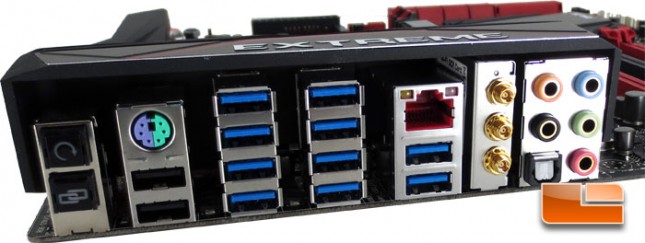
The I/O panel on the ASUS Rampage V Extreme has no shortage of USB 3.0 ports. There is a grand total of ten SuperSpeed USB 3.0 ports back here. That’s in addition to the four Intel SuperSpeed USB 3.0 ports available from the internal headers. There is also the BIOS Flashback button, ROG Connect button, a single PS/2 port for a keyboard or mouse, a pair of USB 2.0 ports, Gigabit Ethernet, WiFi Go!, Bluetooth, five 3.5mm audio jacks, and the optical SPDIF out.
